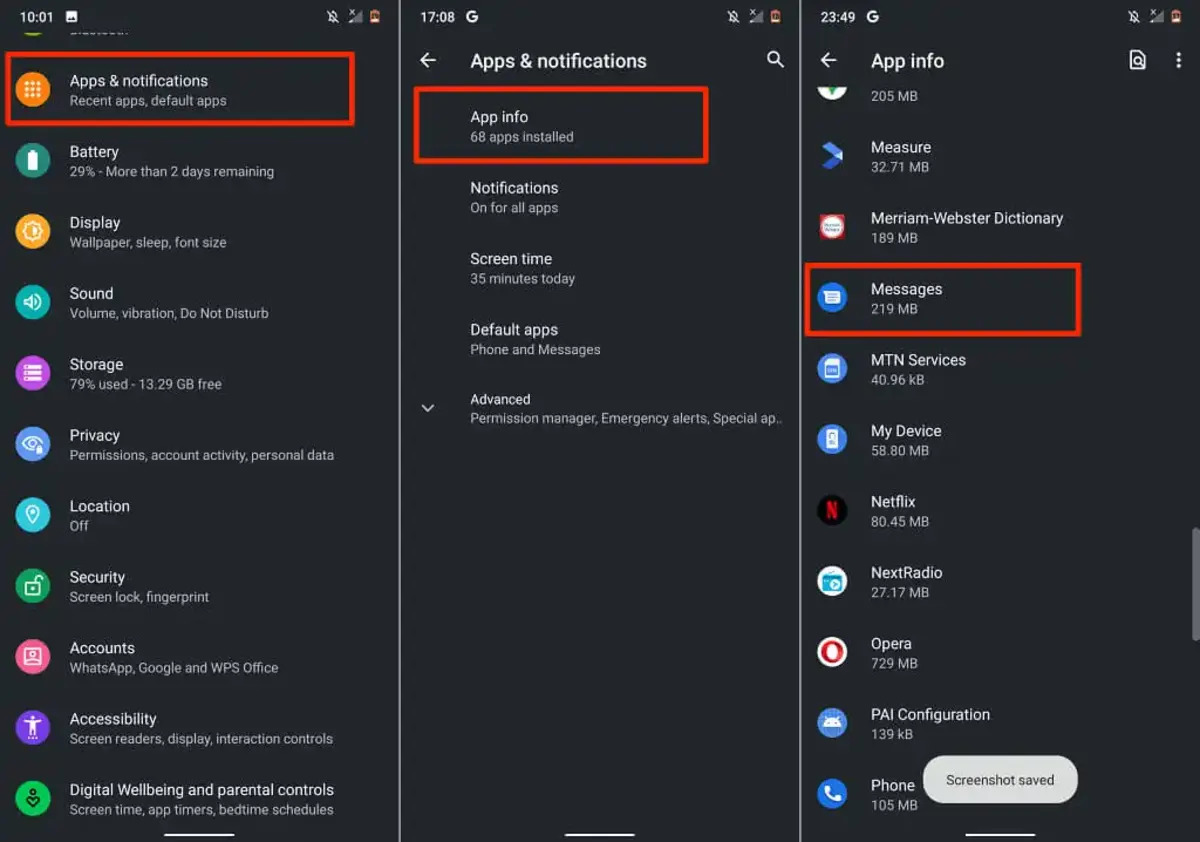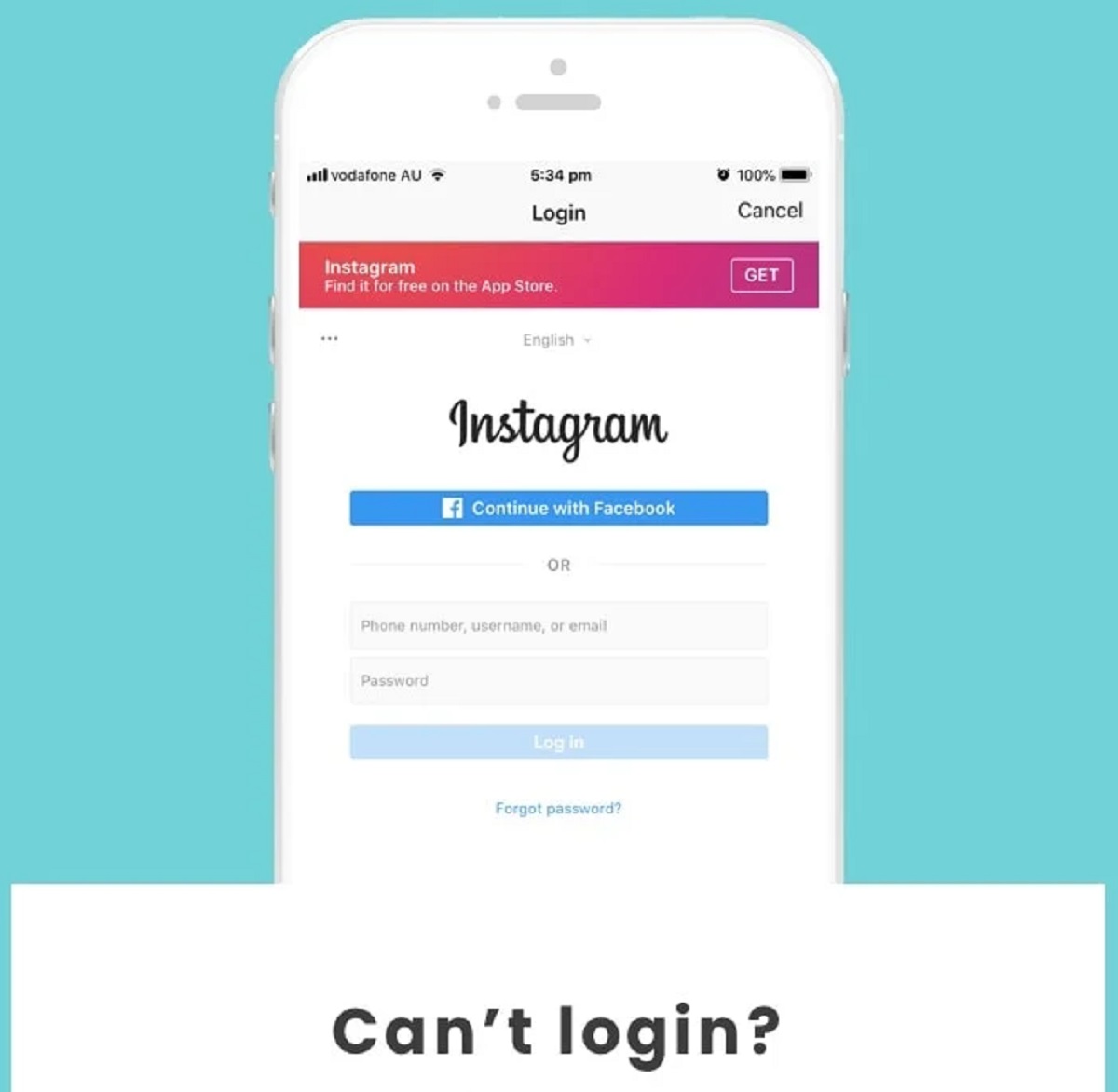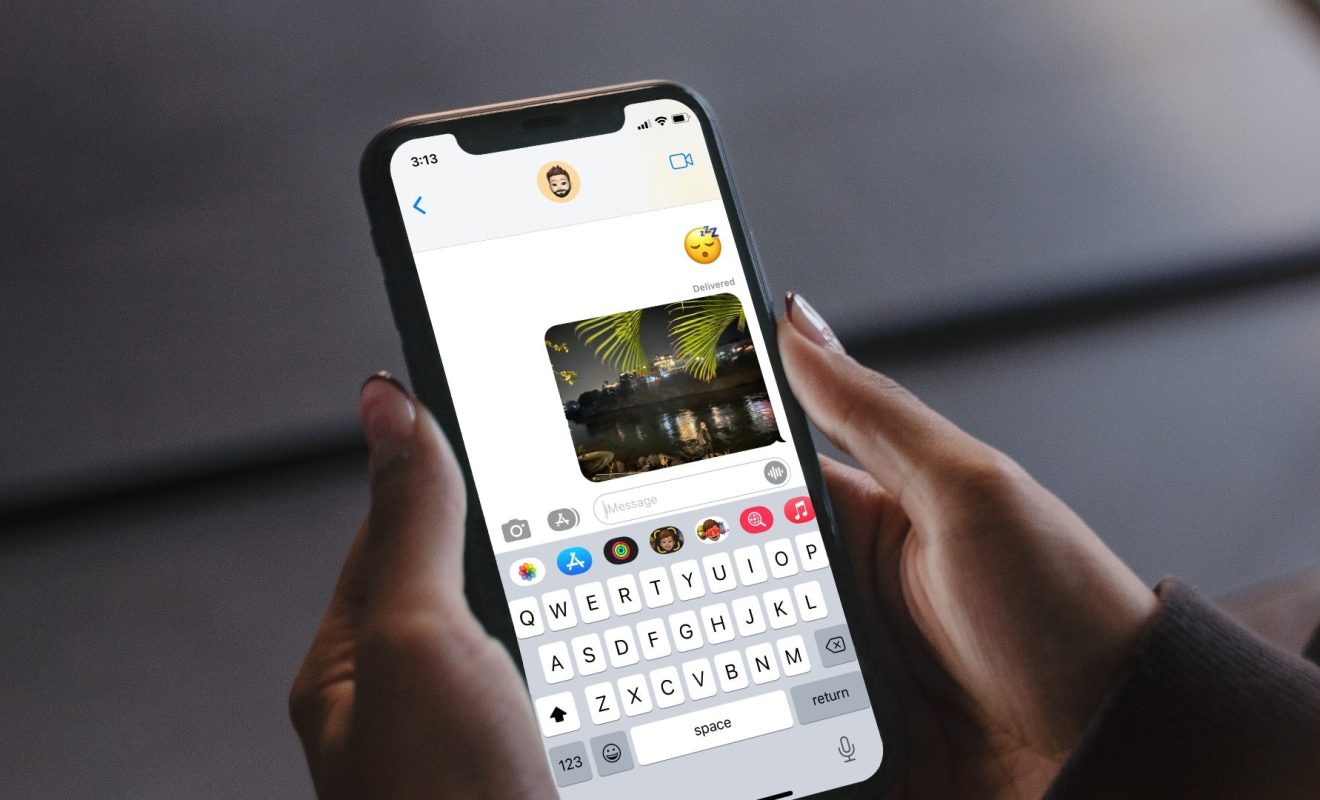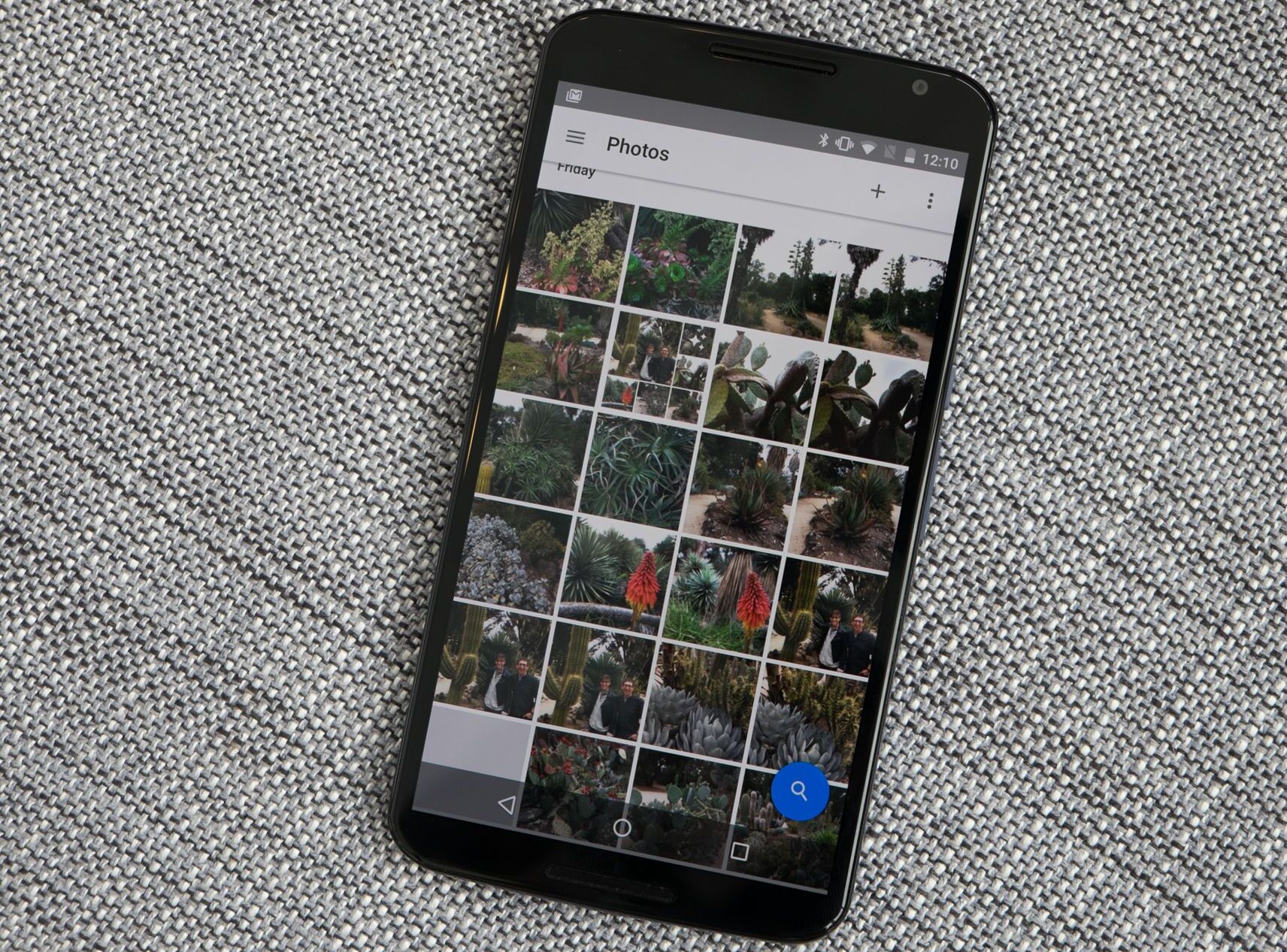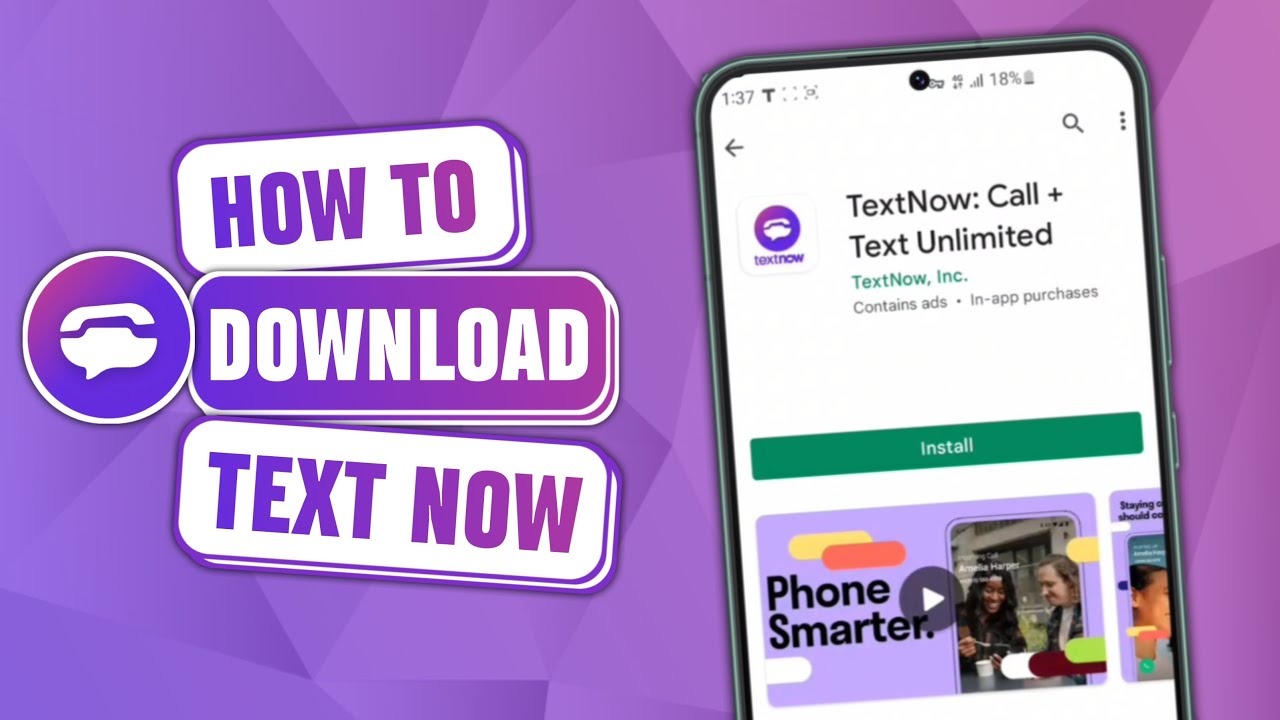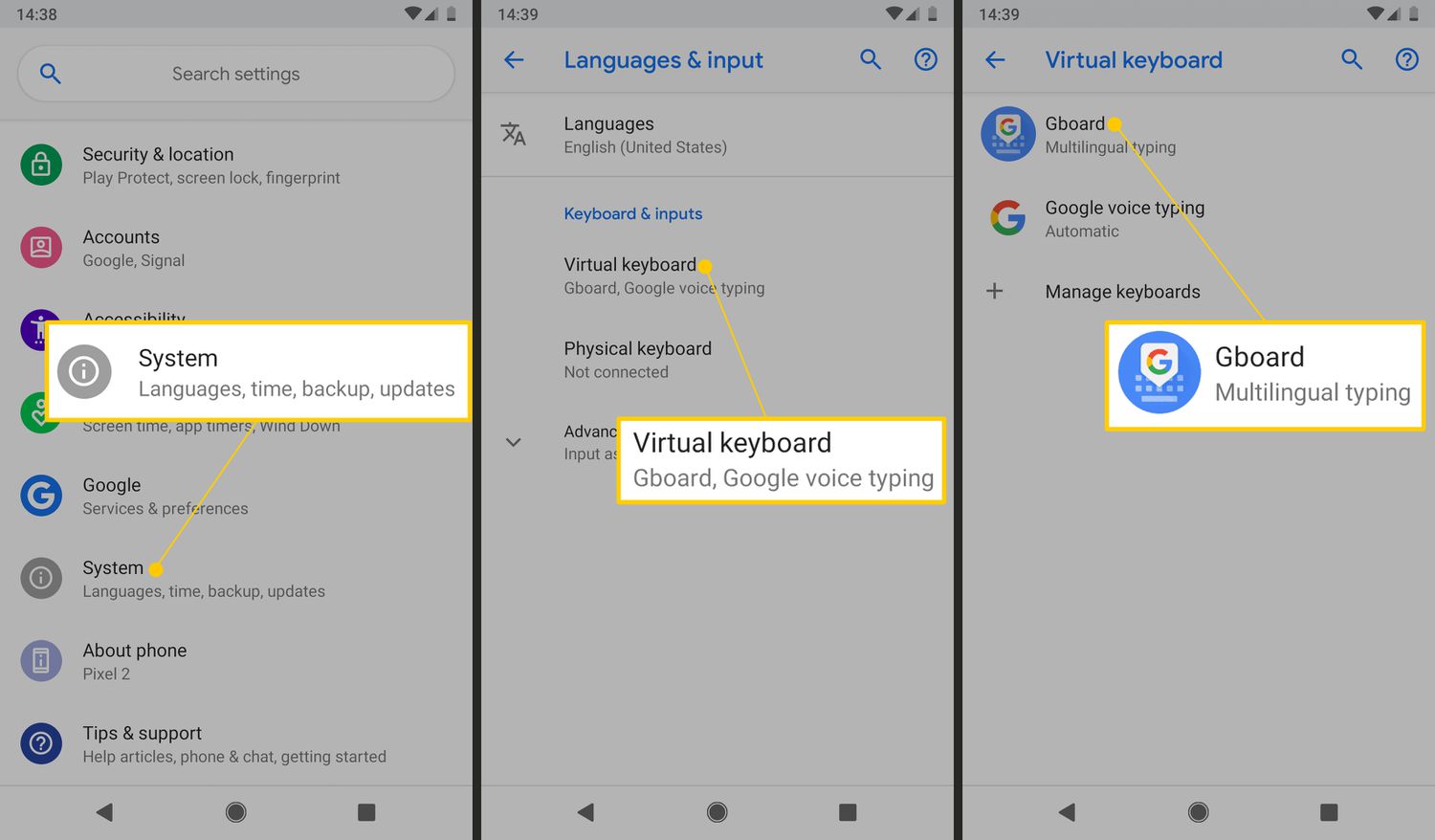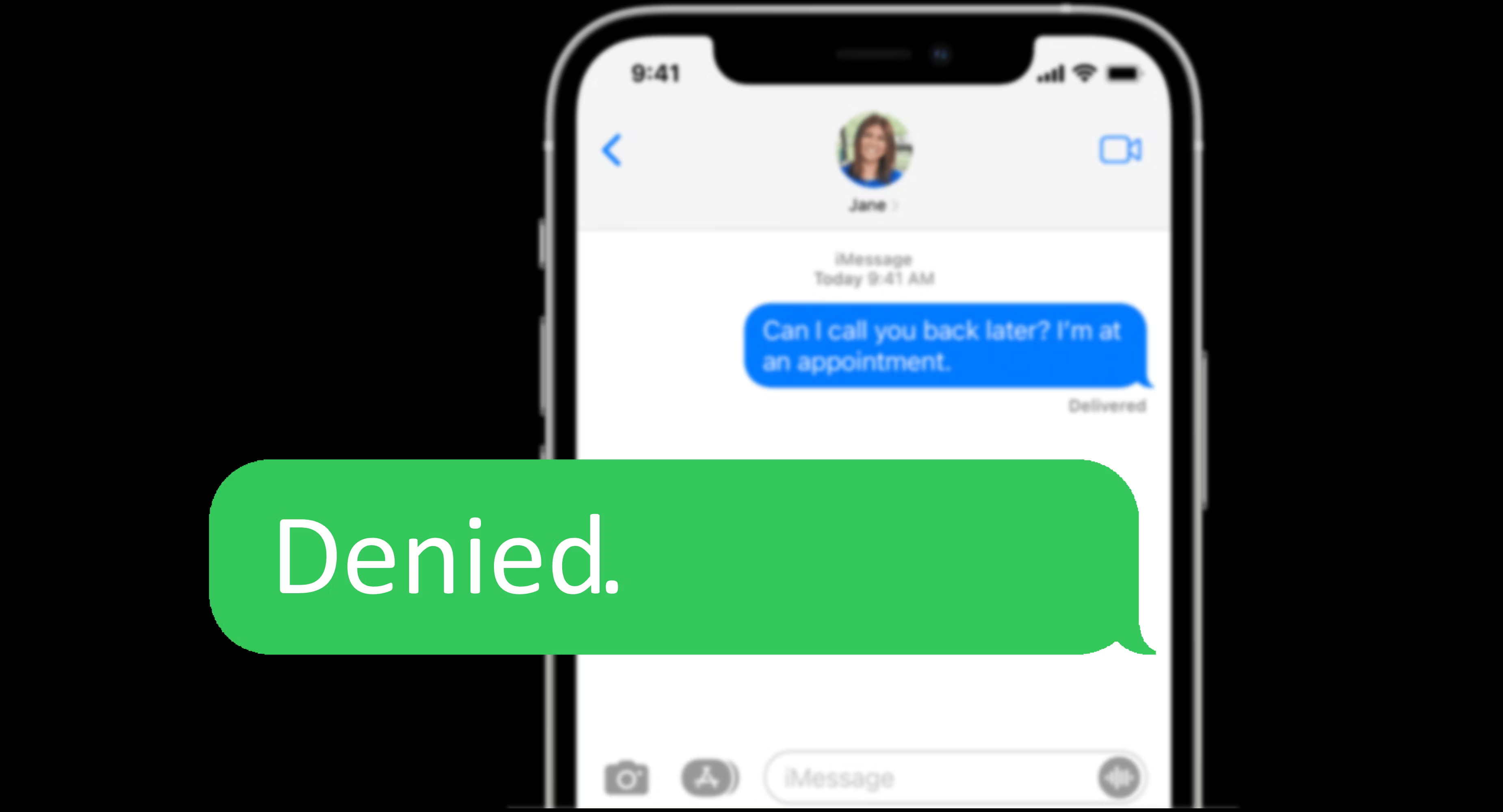Possible reasons why you can’t send text messages on your Android
Text messaging has become an essential means of communication in today’s digital age. However, encountering issues with sending text messages on your Android device can be frustrating. Before you start panicking, it’s important to understand that there can be various reasons behind this problem. Let’s explore some possible causes and solutions to help get your messaging back on track.
1. No mobile network connection: Ensure that your device has a working cellular network connection. Check if the signal bars are visible on your phone’s screen.
2. Insufficient network signal strength: Weak network signal may prevent you from sending messages. Try moving to an area with better network coverage.
3. Airplane mode enabled: Check if Airplane mode is turned on. If it is, disable it as this mode disables all wireless connections, including text messaging.
4. Incorrect Message Center Number: The Message Center Number is responsible for routing your text messages. Make sure it is correctly set in your device’s settings.
5. SIM card issues: Check if your SIM card is inserted properly and functioning correctly. Try removing and reinserting it, or test it in another compatible device.
6. Outdated messaging app: Update your messaging app to the latest version available. Outdated versions may have bugs or compatibility issues that could affect your ability to send messages.
7. Blocked contact: Ensure that the recipient’s number is not blocked in your messaging app. Check your blocked contacts list and remove any unintended blocks.
8. Software glitches or bugs: Restart your device to clear any temporary software glitches that might be causing messaging problems.
9. Full message storage: Clear out old or unnecessary messages from your inbox. A full message storage can prevent new messages from being sent.
10. Incompatible or unsupported texting app: If you’re using a third-party messaging app, try switching to a different app or the default messaging app provided by your device manufacturer.
11. Device memory full: If your device’s internal memory is full, it can impact the performance of your messaging app. Free up space by deleting unused apps or files.
12. Carrier-related problems: Contact your mobile carrier to check if there are any known issues or outages in your area that might be impacting text message services.
13. Inconsistent mobile data settings: Ensure that your mobile data is turned on and properly configured. Some messaging apps require a data connection to send messages.
14. Network congestion or service outage: Temporary network issues or congestion can disrupt text messaging services. Wait for the network to stabilize or contact your carrier for assistance.
15. Outdated system software: Check if there are any system updates available for your Android device. Outdated software can cause compatibility issues with messaging apps.
Understanding the possible reasons behind your text messaging issues can help you troubleshoot and resolve the problem more effectively. If the problem persists, consider reaching out to your device manufacturer or mobile carrier for further assistance.
No mobile network connection
One of the most common reasons why you may not be able to send text messages on your Android device is the lack of a mobile network connection. Text messages rely on a stable cellular network connection to be sent and received. If you are experiencing this issue, here are some steps you can take to resolve it.
First, check if your device has a working cellular network connection. Look for the signal bars on your phone’s screen and ensure that they are visible. If you do not see any signal bars or if they are low, it indicates a weak or no network signal. In such cases, move to an area with better network coverage, such as an open space or near a window.
Another factor that can affect your network connection is the proximity to cellular towers. If you are in a remote or rural area, the distance from the nearest tower can impact your network signal strength. In such cases, consider relocating to a different location or contacting your mobile carrier for information on network coverage in your area.
Additionally, certain structures or materials, such as concrete walls or metal surfaces, can hinder the strength of your cellular signal. If you are indoors or in a building with poor signal reception, try moving closer to a window or stepping outside to improve the signal strength.
If you have recently traveled internationally, ensure that your device has the necessary roaming settings enabled. Roaming allows your device to connect to cellular networks in other countries. Without proper roaming settings, you may not be able to send or receive text messages while abroad.
If you have checked all the above factors and still do not have a network connection, it is possible that there may be an issue with your device’s SIM card. Try removing and reinserting the SIM card to ensure it is properly seated in its slot. You can also try using the SIM card in a different compatible device to see if the issue persists.
Remember, without a reliable mobile network connection, your Android device will not be able to send text messages. By following the steps mentioned above and troubleshooting your network connection, you should be able to resolve this issue and start sending text messages again.
Insufficient network signal strength
Another common reason why you may encounter difficulties sending text messages on your Android device is insufficient network signal strength. A weak signal can hinder the proper transmission of messages and result in failed or delayed delivery. If you’re facing this issue, here are some steps you can take to address it.
First, check the signal strength indicator on your device. If you notice that the signal bars are low or absent, it indicates a weak network signal. Weak signals can be caused by various factors, such as distance from cellular towers, obstructions like buildings or natural barriers, or network congestion.
If you’re indoors, try moving closer to a window or stepping outside. Sometimes, being in an area with a clearer line of sight to the cell tower can significantly improve signal strength. Keep in mind that certain building materials like concrete or metal can further weaken the signal, so it’s best to locate yourself in a less obstructed area.
Additionally, if you’re in a remote or rural area, it’s common to experience weaker network signals. In such cases, consider changing your location or contacting your mobile carrier for information about potential signal boosters or alternative solutions.
If you continually experience poor signal strength in multiple locations, it might be worth considering a signal booster or amplifier. These devices can enhance your signal reception and improve the range and strength of your network connection.
Another factor that can impact signal strength is the condition of your device’s antenna. Ensure that your device’s antenna is not damaged or obstructed. Cleaning the antenna gently with a soft cloth can also help optimize signal reception.
If you’re using a dual SIM device, make sure you have selected the SIM card with the strongest network signal as the preferred SIM for sending messages. You can typically manage SIM settings in the network settings or SIM card settings of your device.
Lastly, if you’re experiencing consistently poor signal strength, it’s advisable to contact your mobile carrier for assistance. They may be able to guide you through additional troubleshooting steps or provide insights into network coverage and potential issues in your area.
By addressing the issue of insufficient network signal strength, you can improve the reliability and efficiency of your text message delivery on your Android device.
Airplane mode enabled
If you find that you’re unable to send text messages on your Android device, one possible reason could be that Airplane mode is enabled. Airplane mode is a feature that disables all wireless connections on your device, including text messaging capabilities. Here’s how you can check and disable Airplane mode if it’s causing the issue.
First, swipe down from the top of your device’s screen to access the Quick Settings panel. Look for the Airplane mode icon, which typically looks like an airplane. If it is highlighted or colored, it means Airplane mode is active. Tap the icon to disable Airplane mode.
You can also access Airplane mode settings through your device’s settings menu. Open the Settings app and look for the “Network & Internet” or “Connections” section. Within that section, you should find an option for Airplane mode. Make sure the toggle switch next to it is turned off.
In some cases, the Airplane mode icon may not be visible in the Quick Settings panel. You can verify the status by checking your device’s status bar, typically located at the top of the screen. If you see an airplane icon or the text “Airplane mode” in the status bar, Airplane mode is enabled. Follow the steps mentioned above to disable it.
After disabling Airplane mode, give your device a few moments to reconnect to the cellular network. Once the network connection is established, try sending a text message to confirm if the issue has been resolved.
If you have accidentally enabled Airplane mode, it can disrupt your ability to send text messages. By ensuring that Airplane mode is disabled, you can restore your device’s wireless connections and resume sending text messages on your Android device.
Incorrect Message Center Number
If you’re facing difficulties sending text messages on your Android device, one possible reason could be an incorrect Message Center Number. The Message Center Number is responsible for routing your text messages to the intended recipients. If it is not properly configured, your messages may fail to be delivered. Here’s how you can check and fix this issue.
To access the Message Center settings on your Android device, open the messaging app and navigate to its settings. Look for an option related to “Message Center” or “SMS settings.” The exact location of these settings may vary depending on the messaging app you’re using.
Once you have located the Message Center settings, verify that the number listed matches the correct one provided by your mobile carrier. The Message Center Number is typically a series of digits that may include country and area codes. If the number is incorrect or missing, you will need to enter the correct number.
To obtain the correct Message Center Number for your mobile carrier, you can visit their website or contact their customer support. They should be able to provide you with the correct number that you need to input in the Message Center settings.
If you have recently changed SIM cards or switched to a different mobile carrier, it’s essential to update the Message Center Number accordingly. Different carriers may have different Message Center Numbers, so make sure to input the correct one for your current carrier.
After entering or updating the Message Center Number, save the changes and exit the messaging app’s settings. Restart your device to ensure that the new settings take effect properly.
Once your device has restarted, attempt to send a text message to verify if the issue has been resolved. If the Message Center Number was indeed the cause of the problem, your messages should now be sent successfully.
Incorrect or missing Message Center Numbers can prevent your text messages from being delivered. By ensuring that the correct number is configured, you can ensure that your messages are properly routed and can be sent without any issues.
SIM card issues
If you’re unable to send text messages on your Android device, it’s possible that there may be issues with your SIM card. The SIM card is a small, removable card that stores important information related to your mobile network connectivity. Here are some steps you can take to troubleshoot SIM card issues.
First, ensure that the SIM card is inserted correctly in your device. Power off your device, locate the SIM card slot (typically located on the side or back of the device), and carefully remove the SIM card. Inspect the SIM card for any signs of damage or dirt. If there are any issues, such as a bent or scratched SIM card, clean it gently with a dry cloth and try inserting it back into the slot.
If the SIM card is inserted properly but you’re still experiencing issues, try using the SIM card in a different compatible device. This can help determine whether the problem lies with the SIM card itself or with your device. If the SIM card works fine in another device, it suggests that there may be a problem with your Android device. In such cases, you may need to contact your device manufacturer or seek professional assistance to resolve the issue.
In some cases, SIM card connectivity issues can be resolved by restarting your device. Power off your Android device, remove the SIM card, wait for a few seconds, reinsert the SIM card, and power on your device again. This helps refresh the SIM card connection and resolve any temporary glitches.
Additionally, make sure that your SIM card is properly activated and configured with the correct mobile carrier settings. You can contact your mobile carrier’s customer support or check their website for information on SIM card activation and configuration.
If you recently switched to a new SIM card or mobile carrier, ensure that you have followed all the necessary steps to activate the new SIM card and update your device’s network settings. This may involve configuring APN (Access Point Name) settings specific to your new carrier.
If you have tried the above steps and are still experiencing issues, it’s recommended to contact your mobile carrier for further assistance. They can provide more specific guidance and help diagnose any SIM card-related problems you may be facing.
By ensuring that your SIM card is properly inserted, activated, and configured, you can overcome some of the common SIM card issues that can hinder your ability to send text messages on your Android device.
Outdated messaging app
If you’re encountering difficulties sending text messages on your Android device, one possible reason could be using an outdated messaging app. Outdated versions of apps may contain bugs or compatibility issues that can hinder the sending and receiving of text messages. Here’s how you can address this issue.
First, check if there are any updates available for your messaging app. Open the Google Play Store or the respective app store on your device, and search for your messaging app. If an update is available, click on the “Update” button to install the latest version.
Updating your messaging app is crucial, as newer versions often include bug fixes, performance improvements, and enhanced compatibility with the latest Android operating system. By keeping your app up to date, you can ensure a smoother messaging experience.
If you’re unable to find an update for your messaging app or if it’s no longer supported by the developer, it may be time to explore alternative messaging apps. There are several popular messaging apps available on the app stores that offer reliable and feature-rich text messaging capabilities.
Consider researching and downloading a different messaging app that suits your preferences. Popular options include Google Messages, WhatsApp, Facebook Messenger, and Telegram. Make sure to read user reviews and check the app’s features and compatibility with your Android device before downloading.
When transitioning to a new messaging app, it’s important to note that your existing text message history may not be transferred automatically. If you wish to retain your previous messages, explore options such as backing up your messages through the old app or exporting them to your device’s storage. Consult the app’s support documentation or online forums for specific instructions on how to migrate your messages.
By ensuring that you are using an up-to-date messaging app, you can take advantage of the latest features, bug fixes, and improvements. This can help resolve any issues you may be facing and provide a more seamless and reliable text messaging experience on your Android device.
Blocked contact
If you’re having trouble sending text messages on your Android device, one possible reason could be that the recipient’s number is blocked in your messaging app. Blocking a contact prevents you from sending messages to that specific person. Here’s how you can check and unblock a contact if it’s causing the issue.
Begin by opening your messaging app and accessing its settings. Look for an option related to “Blocked Contacts” or “Blocked Numbers.” The exact location of these settings may vary depending on the messaging app you’re using.
Once you have located the blocked contacts list, check if the recipient’s number is listed. If you find the number in the blocked contacts list, tap on it and select the option to unblock or remove the contact from the blocked list.
In some messaging apps, you may also be able to unblock a contact directly from the message thread. Long-press on the specific conversation thread with the blocked contact, and a menu or options may appear. Look for an option to unblock the contact and tap on it to remove the block.
After unblocking the contact, exit the messaging app’s settings and attempt to send a text message to the previously blocked recipient. If the issue was due to blocking their number, you should now be able to send messages to them successfully.
It’s important to note that blocking a contact is a privacy feature. If you intentionally blocked someone and later decide to unblock them, remember to evaluate the reasons behind blocking them in the first place. If the issue persists or you continue to have trouble communicating with that particular contact, consider reaching out to your service provider or looking into other methods of resolving any conflicts or communication barriers.
By ensuring that the recipient’s number is not blocked in your messaging app, you can prevent any unintended barriers to sending text messages and maintain smooth communication on your Android device.
Software glitches or bugs
If you’re experiencing difficulties sending text messages on your Android device, it’s possible that the issue is caused by software glitches or bugs within the messaging app or the operating system itself. Software issues can disrupt the proper functioning of the texting feature. Here are some steps you can take to address this problem.
First, try restarting your device. This can help resolve temporary software glitches and refresh the system processes. Power off your Android device, wait for a few seconds, and then power it back on.
If restarting doesn’t resolve the issue, try force-closing the messaging app. Go to your device’s settings and find the “Apps” or “Application Manager” section. Locate the messaging app and tap on it. From the app’s details page, select the option to force close the app. After force-closing, relaunch the messaging app and check if the problem persists.
If the problem continues, it’s worth considering clearing the cache and data of the messaging app. This can help remove any temporary files or corrupted data that might be causing the issue. Again, navigate to the app’s details page in your device’s settings, but this time, choose the option to clear cache and data. Keep in mind that clearing data will remove your message history, so consider backing up any important conversations beforehand.
If the above steps don’t resolve the problem, you may need to update your device’s operating system. Software updates often include bug fixes and improvements that can address issues with messaging apps. Go to your device’s settings, navigate to the “Software Update” or “System Update” section, and check for any available updates. If an update is available, download and install it.
If updating the operating system doesn’t help, you might need to consider uninstalling and reinstalling the messaging app. This process can help remove any software-related issues specific to the app. Go to your device’s settings, find the messaging app in the “Apps” or “Application Manager” section, and uninstall it. Then, visit the app store and reinstall the latest version of the messaging app.
If, after trying all these steps, you’re still unable to send text messages, it’s advisable to contact your device manufacturer or seek assistance from their customer support. They can provide further troubleshooting steps or recommend specific solutions based on your device model and software version.
Software glitches or bugs can cause disruptions in the text messaging feature on your Android device. By following the steps mentioned above, you can effectively address software-related issues and restore the functionality of your messaging app.
Full message storage
If you’re having trouble sending text messages on your Android device, it’s possible that your message storage is full. When your message storage reaches its capacity, it can prevent new messages from being sent. Here are some steps you can take to address this issue.
Start by going to your messaging app and deleting old or unnecessary messages. Long conversations or multimedia messages can take up significant storage space, so it’s important to regularly clean up your message inbox.
You can delete individual messages or entire threads. Simply open the messaging app, locate the conversation or message you want to delete, and tap and hold on it. A menu will appear with options to delete the message or thread. Choose the appropriate option and confirm the deletion.
Consider archiving or saving important messages before deleting them. Some messaging apps offer a built-in archiving feature that allows you to keep certain conversations without cluttering up your active message inbox. Explore the options within your messaging app to see if this feature is available.
In addition to deleting old messages, you can also adjust the settings of your messaging app to limit the number of messages it stores. Find the settings menu within your messaging app and look for options related to message storage or retention. You can set a limit for the number of messages to keep or choose to automatically delete messages older than a specific timeframe.
If you regularly send or receive multimedia messages (MMS), such as photos or videos, they can quickly consume storage space. Consider manually deleting old media attachments, or look for an option within your messaging app to automatically delete older media files.
In case your device has an external storage option, such as an SD card, you can move your message storage to that card. Check the settings within your messaging app to see if there is an option to change the storage location.
If you have followed these steps and your message storage is still full, it’s recommended to remove apps or files that are taking up valuable space on your device. Uninstall unused apps or transfer files to an external storage device or cloud storage service to free up storage capacity.
By freeing up space in your message storage, you can ensure that your device has enough room to send and receive new text messages without any issues.
Incompatible or unsupported texting app
If you’re facing difficulties sending text messages on your Android device, it’s possible that you are using an incompatible or unsupported texting app. Incompatibility issues can arise when using third-party messaging apps that are not optimized for your device or the specific version of Android you’re running. Here’s how you can address this issue.
First, check if there are any available updates for your messaging app. Open the Google Play Store or the respective app store on your device and search for your messaging app. If an update is available, click on the “Update” button to install the latest version. Updating your app can often resolve compatibility issues by incorporating bug fixes and improvements
If updating the messaging app doesn’t solve the problem, it’s worth considering switching to a different messaging app. Look for messaging apps that are known to be compatible with your device and the version of Android you’re running. Popular and widely used messaging apps like Google Messages, WhatsApp, or Telegram are generally well-optimized and compatible with most Android devices.
Before transitioning to a new messaging app, it’s important to back up any important messages or conversations from your current app. Some messaging apps provide built-in backup options, while others may require you to manually export and save your messages. Refer to the documentation or support resources of your current app for specific instructions on how to back up your messages.
After backing up your messages, download and install the new messaging app from the app store. Follow the app’s setup instructions and import your backed-up messages if possible. Keep in mind that not all messaging apps support importing messages from other apps, so you may need to start fresh with the new app.
Once you’ve started using the new messaging app, test if you can send text messages without any issues. Newer, well-optimized apps are more likely to be compatible with your device and provide a smoother messaging experience.
If you continue to experience problems with multiple messaging apps, it may indicate a deeper compatibility issue with your specific device. In such cases, it’s advisable to contact your device manufacturer or seek assistance from their customer support for further troubleshooting and potential solutions.
By using a messaging app that is compatible and well-optimized for your Android device, you can overcome compatibility issues and ensure seamless text messaging functionality.
Device memory full
If you’re unable to send text messages on your Android device, it’s possible that your device’s memory is full. When your device’s internal storage or memory reaches its capacity, it can impact the performance of various apps, including the messaging app. Here’s how you can address this issue.
Start by assessing the storage usage on your device. Go to your device’s settings and find the “Storage” or “Storage & Memory” section. This will provide you with an overview of how your device’s storage is being utilized.
Identify areas where you can free up space. Begin by reviewing and deleting any unnecessary files, such as old photos, videos, or documents. You can do this by using a file manager app or by accessing the specific media folders within your device’s storage settings.
Consider uninstalling unused apps or games to free up additional storage space. Go through your app list and identify applications that you no longer use or need. Tap on each app and choose the option to uninstall or remove it from your device.
Transferring files to external storage, such as an SD card or cloud storage service, is another effective method for freeing up device memory. Check if your device supports external storage and move files, such as large media files or documents, to the external storage option.
Furthermore, images, videos, and media files received through the messaging app can accumulate and consume valuable storage space. Open your messaging app and access the settings to find options for media storage. Configure the app to automatically delete or limit the number of media files it stores.
If you have already tried the above steps and are still running out of storage space, you may benefit from using a storage management app. These apps analyze your device’s storage and help identify and clear unnecessary files, cache data, and other unused resources to free up space.
Regularly clearing the cache of your messaging app can also help free up temporary storage space. Go to your device’s settings, locate the “Apps” or “Application Manager” section, find your messaging app, and choose the option to clear the app’s cache.
It’s important to note that freeing up device memory is an ongoing process. Regularly monitor your device’s storage usage and follow good storage management practices to maintain sufficient space for seamless app performance, including text messaging.
By managing your device’s memory effectively and freeing up storage space, you can ensure that your Android device has enough resources to support the smooth functioning of the messaging app and send text messages without any issues.
Carrier-related problems
If you’re experiencing difficulties sending text messages on your Android device, it’s possible that the issue is related to your mobile carrier. Various carrier-related problems can affect text message delivery. Here are some steps you can take to address this issue.
First, verify if there are any known issues or outages reported by your mobile carrier. Check their website or social media channels for any notifications or updates regarding network problems. If there are known issues, the carrier is likely already working on resolving them, and you may need to wait until the issue is fixed.
If you suspect that the problem might be specific to your account or SIM card, try contacting your carrier’s customer support. Explain the issue you’re facing and provide them with any relevant details they may need to investigate the problem. They can check if there are any account-related issues or if there are specific settings that need to be adjusted on their end to resolve the text messaging problem.
It’s also worth checking if there are any carrier-specific settings that need to be configured on your device. Common settings include APN (Access Point Name) settings or network mode selection. These settings can vary depending on the carrier, and incorrect configuration may affect text message delivery. Contact your carrier’s customer support or visit their website to obtain the correct settings and instructions for configuring them on your Android device.
Factors such as network coverage and signal strength can also be influenced by your carrier. If you consistently experience poor network reception or signal issues, consider reaching out to your carrier for assistance. They may be able to provide guidance on improving network coverage in your area or suggest specific troubleshooting steps based on their network infrastructure.
If you have recently switched to a new mobile carrier, ensure that your new carrier’s network settings are properly configured on your device. The carrier should provide you with instructions or even a pre-configured setup file to ensure that your device is correctly connected to their network.
It’s important to note that carrier-related issues are beyond your control as a user, and resolving them often requires cooperation and assistance from your mobile carrier. By contacting them and seeking their guidance, you can work towards resolving any specific carrier-related problems affecting text message delivery on your Android device.
Inconsistent mobile data settings
If you’re encountering difficulties sending text messages on your Android device, it’s possible that the problem lies in inconsistent mobile data settings. Some messaging apps require a mobile data connection to send messages, while others can operate solely on a Wi-Fi network. Here’s how you can address this issue.
First, check if your mobile data is turned on and properly configured. Open the settings on your Android device and navigate to the “Network & Internet” or “Connections” section. Ensure that the toggle switch for mobile data is enabled.
If mobile data is already turned on, try turning it off and then back on again. This can help refresh the connection and resolve any temporary glitches. You can also try enabling Airplane mode for a few seconds and then disabling it to reset all wireless connections, including mobile data.
Ensure that your device is connected to a reliable and stable mobile network. Weak or fluctuating network signals can impact the performance of mobile data. If you’re in an area with poor signal reception, consider moving to a different location or contacting your mobile carrier for assistance.
It’s worth noting that some messaging apps provide the option to send messages over Wi-Fi if mobile data is not available or turned off. Check the settings of your messaging app to see if this option is enabled. Enabling the Wi-Fi messaging feature can help send messages even when mobile data is inconsistent or unavailable.
Additionally, some Android devices have specific mobile data settings for individual apps. Make sure that the mobile data settings for your messaging app are properly configured. Go to the app settings and look for options related to data usage or data access. Confirm that the app is allowed to use mobile data.
If you’re using a dual SIM device, ensure that you have selected the correct SIM card for mobile data usage. Go to the SIM card settings in your device’s settings menu and confirm that the preferred SIM for data is selected correctly.
Inconsistent mobile data settings can impact the ability to send text messages on your Android device. By ensuring that your mobile data is turned on, properly configured, and working reliably, you can overcome this issue and successfully send text messages.
Network congestion or service outage
If you’re facing difficulties sending text messages on your Android device, it’s possible that the problem is related to network congestion or a service outage. These issues can occur when there is a high volume of network traffic or when there are disruptions in the mobile network infrastructure. Here’s how you can address this issue.
First, check if there are any known network issues or service outages reported by your mobile carrier. Visit their website or social media channels for any notifications or updates regarding network problems. If there are known issues, it’s likely that the carrier is already working on resolving them, and you may need to wait until the problem is fixed.
If there are no reported network issues, consider restarting your device. Power off your Android device, wait for a few seconds, and then power it back on. Restarting can help refresh the network connections and resolve any temporary glitches that may be causing network congestion.
Another option is to switch to a different network connection, such as Wi-Fi, if available. If you’re experiencing network congestion on your mobile data network, connecting to a stable Wi-Fi network can help alleviate the congestion and allow for smoother text message delivery.
In some cases, manually selecting a different network operator can also help overcome network congestion. Go to your device’s settings, navigate to the “Network & Internet” or “Connections” section, and look for “Carrier” or “Mobile Network” settings. From there, you may find an option to select a different network operator. Choose another operator and see if it improves the text message sending experience.
Consider checking if there are any system updates available for your device. Software updates often include bug fixes and improvements that can enhance network connectivity and address network-related issues. Go to your device’s settings and look for the “Software Update” or “System Update” section to check for any available updates.
If the network congestion or service outage persists even after trying these steps, it’s advisable to contact your mobile carrier for further assistance. They can provide information about the services in your area and troubleshoot any specific issues that may be affecting your texting capabilities.
Network congestion or service outages can temporarily disrupt the ability to send text messages on your Android device. By being patient, exploring alternative network connections, and contacting your mobile carrier, you can overcome these issues and restore seamless text messaging functionality.
Outdated system software
If you’re experiencing difficulties sending text messages on your Android device, it’s possible that the issue is related to outdated system software. Outdated software can sometimes cause compatibility issues with messaging apps or create glitches that affect text message functionality. Here’s how you can address this issue.
Start by checking if there are any system updates available for your Android device. Manufacturers regularly release updates that include bug fixes, security patches, and performance improvements. These updates can often resolve software-related issues that may be affecting your messaging app.
Go to your device’s settings and look for the “Software Update” or “System Update” section. From there, you can check for any available updates. If an update is available, follow the on-screen instructions to download and install it. Make sure your device is connected to a stable Wi-Fi network, and it has sufficient battery charge or is connected to a power source during the update process.
If you’re unable to find any system updates or if the available updates do not resolve the issue, it might be worth considering a factory reset as a last resort. Performing a factory reset will erase all data on your device and restore it to its original state. This can help resolve software-related problems that may be impacting your messaging app.
Before proceeding with a factory reset, it’s important to backup any important data or files on your device. This can include photos, videos, contacts, and any other personal or important information. You can back up your data to an external storage device, cloud storage service, or use the backup options available in your device’s settings.
After backing up your data, go to your device’s settings and look for the “System” or “Reset” section. Select the option to perform a factory reset. Follow the on-screen instructions to complete the process. Keep in mind that a factory reset will erase all data on your device, so it’s crucial to ensure that you have backed up everything important beforehand.
Once the factory reset is complete, set up your device again and test if you can send text messages without any issues. It’s advisable to only reinstall necessary apps and avoid restoring backup files or data that might contain software-related issues.
If, after all these steps, you’re still unable to send text messages, it’s recommended to contact your device manufacturer or seek assistance from their customer support. They can provide further troubleshooting steps or recommend specific solutions based on your device model and software version.
Outdated system software can sometimes cause compatibility issues with messaging apps on your Android device. By keeping your device’s software up to date or considering a factory reset as a last resort, you can potentially resolve software-related problems and restore normal text messaging functionality.







